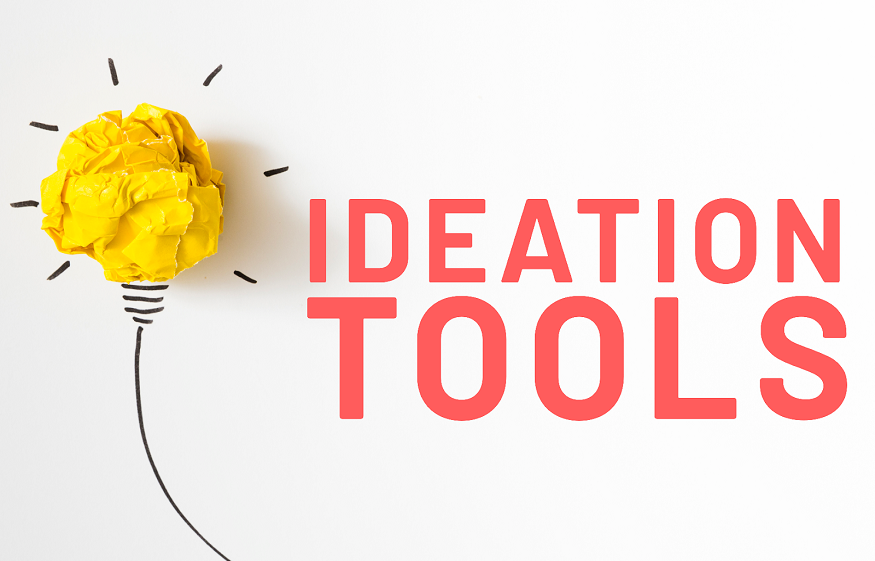Product ideation is where ideas are gathered and analyzed to come up with new or improved products or services for the organization.
It’s more than just a brainstorming session – for effective ideation, you need to ensure that effective next steps are in place for taking your ideas from theory into reality. It’s very easy for these ideas to become lost!
Why carry out product ideation?
An effective product ideation strategy enables you to:
- Source ideas and opinions from a wider range of sources (idea management software can help with this) – tapping into the expertise of people from around your organization rather than limiting yourself to one team
- Build strong links with clients and partners, and gather opinions from your target audience
- Improve employee engagement and retention (Forbes has found that employees who feel they are being listened to by their organization are almost five times more likely to feel empowered to perform their best work.)
- Generate ideas quickly and effectively, then triage those suggestions to build better products and services
- Create greater value for both your organization and its clients
Including open innovation in product ideation
An often-overlooked aspect of product ideation is the ability to source ideas not only from your internal teams but also from external stakeholders. Gathering feedback from customers and partners is a great way to get honest feedback for improving your product or services. They can give you valuable insights that may not be clear to your internal teams.
Additionally, giving your clients and partner organizations a voice will make them feel a greater connection to your business. People like to feel that their voice is being heard!
Gathering ideas
Prior to gathering ideas, it’s important to build support and engagement for the strategy from across your business. Successful ideation needs a “top-down, bottom-up approach” in order to work:
- You need buy-in from leadership in order for ideas to be implemented
- There needs to be a critical mass of people involved for idea gathering to be successful.
Take the time to listen to people from across your business and take their feedback on-board – people love to know that they’re being listened to. Ensure that the value of product ideation is clear to senior stakeholders, add idea generation into targets for middle-management, and offer rewards for those who take part. Don’t forget to make sure that everyone has the information they need about your product or service in order to make a valuable contribution.
When you gather ideas, ensure that you are transparent about what happens to them after submission. It’s a good idea to offer praise, rewards and recognition to those who take part or have ideas carried forwards.
It’s also important to keep the momentum going – it’s easy to launch an ideation campaign and then fall into the trap of letting it go stagnant. To avoid this, ensure that you run campaigns on a regular basis. For example, you could run a quarterly business-wide challenge on a set product, then have smaller challenges for individual departments.
Don’t forget to include any colleagues who work offline or don’t have access to a company email – such as those working on the factory floor or directly supporting clients. Some organizations – such as MM Group – use physical suggestion boxes, that are then inputted into ideation software by an individual champion. For more information, we have a detailed guide to tackling ideation in offline communities.
Triaging ideas
Once you’ve gathered your ideas, it’s important to triage them and select those to move to the next stage of the ideation process. You could even look at combining ideas that are along similar lines.
Filter down your ideas into a shortlist of those you believe align to your business strategy and have the potential to add the greatest value to your product or service (this can be monetary or non-monetary value, such as the ability to create greater customer satisfaction).
Once you have a shortlist of ideas, it’s a good idea to analyze them further using business cases.
A business case is used to assess the value of potential projects and essentially sell them to key stakeholders within your organization. It is used to provide justification for a project or task and evaluates the estimated costs, risks, benefits and potential delays.
Once you have created business cases around your ideas, you’ll clearly be able to see those that have the potential to create the greatest value for your organization.
Don’t forget to let the individuals who suggested those ideas know that their suggestions have the potential to make an impact on your business.
In summary
Product ideation enables you to quickly gather ideas from a range of sources – external and internal – in order to improve your organization’s products or services. You can carry this out in two stages:
- Gain buy-in from key stakeholders and then launch idea-gathering campaigns to source their ideas (don’t forget your colleagues who work offline!)
- Triage those ideas to discover those that you can move on to become active projects.

 Optimising Employee Transport Management: Top Strategies for Efficient Commutes
Optimising Employee Transport Management: Top Strategies for Efficient Commutes  The Ultimate Guide to Choosing the Right Lifting Slings for Your Project
The Ultimate Guide to Choosing the Right Lifting Slings for Your Project  Easy Steps to Apply Online for Axis Bank Personal Loans
Easy Steps to Apply Online for Axis Bank Personal Loans  Plan a Stress-Free International Trip with Best Foreign Travel Insurance
Plan a Stress-Free International Trip with Best Foreign Travel Insurance  The IPO Process Explained: Steps to Launching a Successful Public Offering
The IPO Process Explained: Steps to Launching a Successful Public Offering  Essential Features to Look for in a Trading Broker
Essential Features to Look for in a Trading Broker  Factors That Influence prices on the Gold Market
Factors That Influence prices on the Gold Market  Personal Loans for Women in India: Empowering Financial Independence
Personal Loans for Women in India: Empowering Financial Independence  Investment and Insurance: The Dual Benefits of Unit Linked Plans
Investment and Insurance: The Dual Benefits of Unit Linked Plans 






